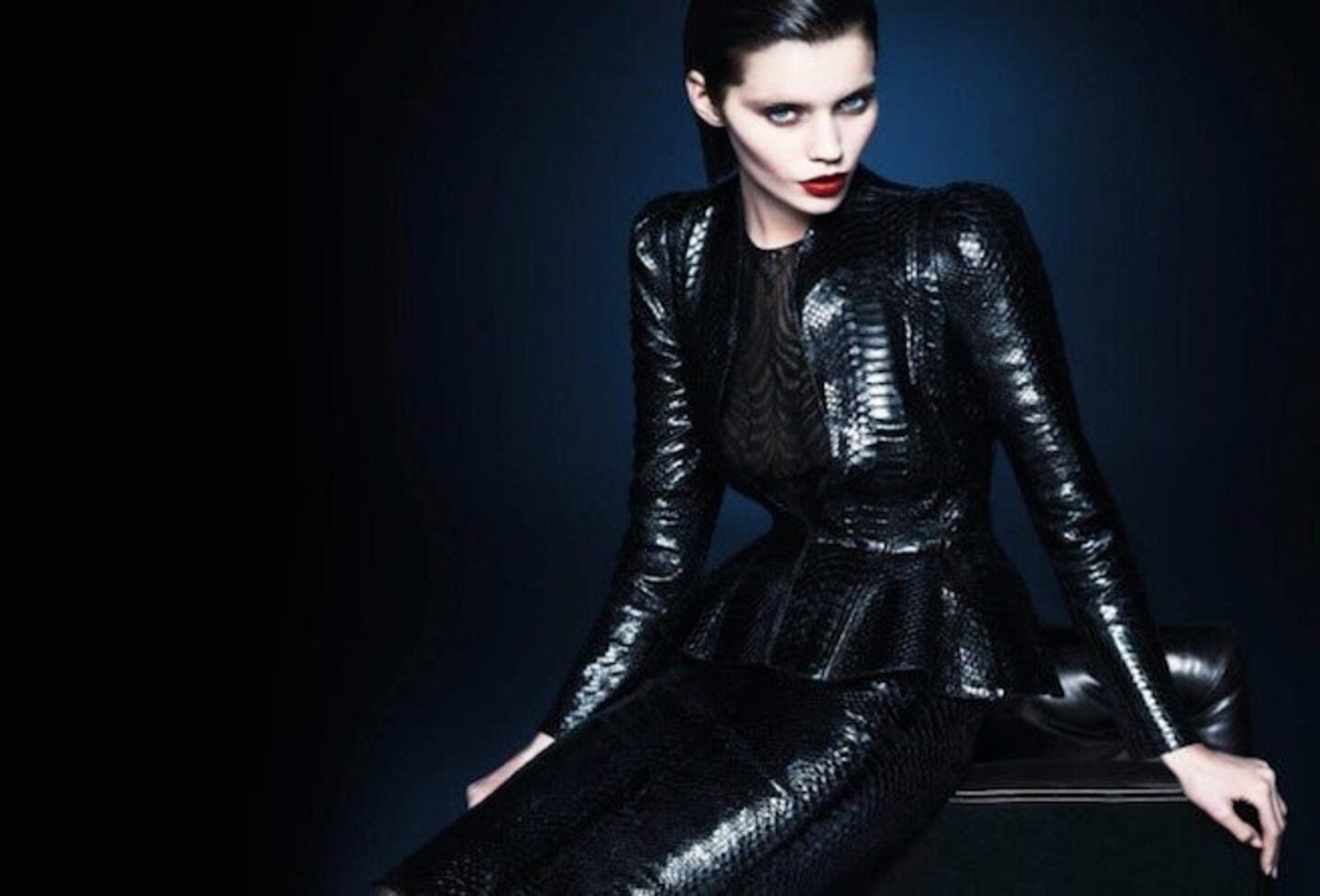
The Business of Fashion
Agenda-setting intelligence, analysis and advice for the global fashion community.

Agenda-setting intelligence, analysis and advice for the global fashion community.

NEW YORK, United States — Every year I buy the September issue of American Vogue. It's a good way to take the industry's temperature. There, I can see all the ad campaigns in one shot and try to understand the image designers are trying to sell us.
This season the look is decidedly dark. Ads from Gucci, Prada, Miu Miu, Proenza Schouler and others contain gothic elements, whether in the clothes, the makeup or the setting. Even Roberto Cavalli, whose success chiefly lies in flinging leopard prints at Russian parvenus, developed a campaign with subdued, dark colours and smoky-eyed models wearing chain-trimmed black-and-white clothes.
One tempting explanation for this is the gloomy socio-economic era we inhabit, what with persistent global financial woes and political unrest. For some reason the fashion industry’s talking heads have an incorrigible desire to peg fashion trends to macroeconomics and political events. But this explanation is dubious at best.
The gothic aesthetic — darkly romantic, with emphasis on black — had been hiding in the corners of the fashion universe for a long time, permeating the work of designers like Ann Demeulemeester, Yohji Yamamoto, and, most notably, Alexander McQueen. Yet, labels with a gothic bent weren't widely emulated until Rick Owens hammered his brutalist vision of goth into the collective head of the industry, season after season.
ADVERTISEMENT
The rise of the gothic look has also been propelled by Ricardo Tisci's work at Givenchy. Arguably, Givenchy is now the hottest ticket in fashion town, especially since the likes of Kanye West have jumped on the label, making it so popular that retailers cannot keep Tisci's $500 printed t-shirts in stock.
"This darkly romantic look has, pardon the expression, entered the bloodstream of fashion," said Valerie Steele, fashion scholar and director of the Museum at the Fashion Institute of Technology.
Indeed, the aesthetic has even spawned sub-genres. First, there is “hipster goth,” epitomised by companies like LA-based Skingraft, All Saints and Oak, the duo of hipster goth stores in New York, recently bought by American Apparel.
Then there's "ghetto gothic," a term used by the designer Shayne Oliver to describe his cutting-edge label Hood by Air. The sub-genre also encapsulates labels like En Noir, with its black leather tops, and Pyrex 23, which is busily printing images of Caravaggio paintings onto Champion sweatshirts. And a few weeks ago, the rapper Angel Haze expressed her wish to collaborate with Rick Owens, using the term "goth ninja," which appears to have entered the pop culture mainstream.
So what’s driving this?
My hunch is that goth is one of the few cultural movements with strongly recognisable visual codes that fashion has not yet fully mined. And it's easy to mine, because its elements can be broken down without much effort. Plus, the aesthetic is edgy — what with the emphasis on black, the elongated silhouette, the leather — which fashion loves, at least in theory. Of course, in practice, what fashion really loves is to take what's edgy and defang it (the default look on the Upper East Side these days seems to be a Rick Owens leather jacket paired with a Chanel bag and Tory Burch riding boots).
Looking at Gucci’s fall campaign, Dr. Steele said, “It’s a high-glamour goth look, with the snakeskin leather and the red lipstick and the sleek, black hair. It was perfect for them to style it like that, body-conscious and futuristic. There is flexibility about the look. You can take the core — that charisma of deviance and dark romanticism — and easily pick it apart, so it has a lot of potential for a wider range of designers. The visual codes of goth are very easy to detach from its signifiers.”
What's more, fashion has always taken its cues from music and goth may be one of the last major musical sub-cultures left to tap. Punk is now truly dead, as the sad spectacle of the star-studded gala for the opening of the Metropolitan Museum of Art's Punk: Chaos to Couture exhibit reminded us last spring. And other areas of rock music have been beaten to death (though Hedi Slimane and John Varvatos will probably disagree). Goth is also attractive to fashion, as Dr. Steele pointed out, because, traditionally, it's more of a female look, baroque and decorative, and therefore more easily mined for womenswear.
ADVERTISEMENT
For years, goth lived on the fringes of fashion, referenced by designers who genuinely related to the sub-culture, and not just its visual aesthetic. But today, it's clear that major brands are mining the look for all it’s worth.
I, for one, am sad to see another cultural movement watered down, its aesthetic decoupled from its substance. Devil knows fashion has done enough of that.
Eugene Rabkin is the editor of StyleZeitgeist magazine and the founder of stylezeitgeist.com
From analysis of the global fashion and beauty industries to career and personal advice, BoF’s founder and CEO, Imran Amed, will be answering your questions on Sunday, February 18, 2024 during London Fashion Week.
The State of Fashion 2024 breaks down the 10 themes that will define the industry in the year ahead.
Imran Amed reviews the most important fashion stories of the year and shares his predictions on what this means for the industry in 2024.
After three days of inspiring talks, guests closed out BoF’s gathering for big thinkers with a black tie gala followed by an intimate performance from Rita Ora — guest starring Billy Porter.